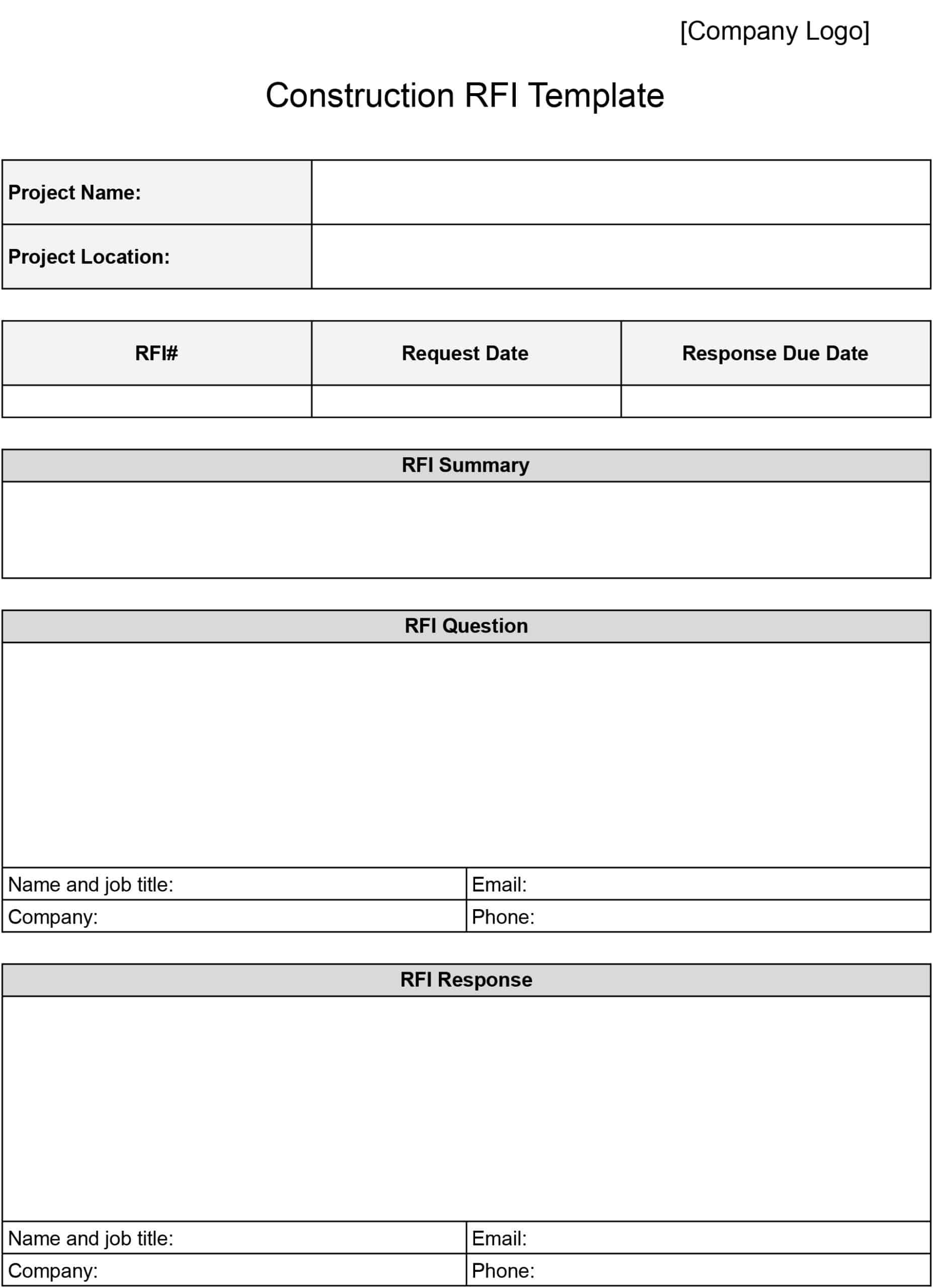Utilizing a standardized form improves project efficiency by streamlining communication and ensuring all necessary information is gathered promptly. This reduces delays caused by incomplete information or miscommunication. Clear and comprehensive data collection leads to better decision-making, ultimately contributing to successful project delivery and reduced risks.

This article will further explore key components of these documents, offer practical examples of their use, and provide guidance on implementation within various project contexts.
Key Components of a Construction Request for Information Template
Effective information requests require specific components to ensure clarity and completeness. These elements facilitate efficient processing and accurate responses.
1: Project Information: Clear identification of the relevant project is crucial. This typically includes the project name, project number, and relevant contract details.
2: Requestor Information: Contact details of the individual or organization submitting the request are essential for directing responses and follow-up communication. This includes the name, company, phone number, and email address.
3: Recipient Information: Accurate contact information for the intended recipient ensures timely delivery and proper routing within the receiving organization.
4: Request Date and Due Date: Specifying the request date and desired response date helps manage expectations and track progress.
5: Subject and Detailed Description: A concise subject line and detailed description of the information needed are essential for clarity and accurate responses. Including specific references to drawings, specifications, or other project documents can greatly improve clarity.
6: Supporting Documentation: Attaching relevant drawings, specifications, or other documents helps clarify the request and provides context for the recipient.
7: Response Space: Providing dedicated space for the recipient to respond directly within the document streamlines the process and maintains a clear record of communication. This could be a designated area for written responses, attached files, or links to external resources.
8: Closing and Signatures: Including space for signatures or digital confirmations helps formalize the process and ensures accountability.
Accurate and complete information requests contribute significantly to project success. These components ensure efficient communication and facilitate timely resolution of inquiries.
How to Create a Construction Request for Information Template
Creating a standardized template ensures consistency and efficiency in project communication. A well-structured template facilitates clear articulation of information needs and promotes timely responses.
1: Define Required Fields: Determine the essential information needed for each request. Consider project-specific requirements and industry best practices.
2: Select a Format: Choose a format suitable for the project and organization. Options include digital spreadsheets, word processing documents, or dedicated project management software.
3: Design the Layout: Organize the fields logically to facilitate easy completion and review. Group related information for clarity and efficiency.
4: Incorporate Project Details: Include fields for essential project information, ensuring consistent identification of the relevant project.
5: Include Contact Information: Designate sections for requestor and recipient contact details. This facilitates direct communication and efficient follow-up.
6: Add Dates and Deadlines: Incorporate fields for the request date and desired response date. This promotes timely responses and efficient tracking.
7: Designate Space for Detailed Descriptions: Include ample space for clear and concise descriptions of the information needed. Provide fields for supporting documentation.
8: Include Response Area: Provide a dedicated space for responses directly within the document. This streamlines communication and maintains a clear record.
9: Implement Version Control: Implement a system to track revisions and ensure all parties are using the most current version of the template.
A standardized template streamlines information exchange, reduces misunderstandings, and contributes to effective project management. Consistent use of a well-designed template improves communication efficiency and supports informed decision-making.
Standardized documentation for requesting information plays a vital role in successful construction project execution. From clarifying design details to resolving technical queries, a structured approach ensures efficient information exchange between stakeholders. Key components such as clear project identification, detailed descriptions, and designated response areas contribute to minimizing misunderstandings and promoting timely project delivery. Implementing a well-defined template facilitates consistent communication and improves overall project efficiency.
Effective communication underpins successful project outcomes. Adopting standardized information request procedures, supported by comprehensive templates, empowers project teams to proactively address information gaps, mitigate potential risks, and ultimately contribute to projects completed on time and within budget. Continual refinement of these processes, based on project experience and industry best practices, further enhances communication efficiency and supports a collaborative project environment.
